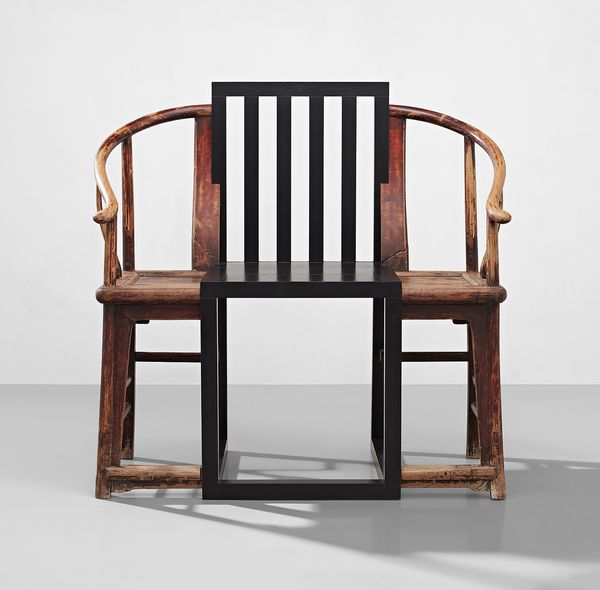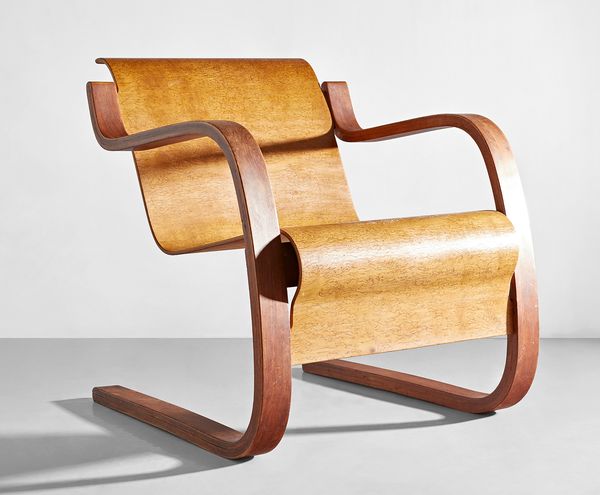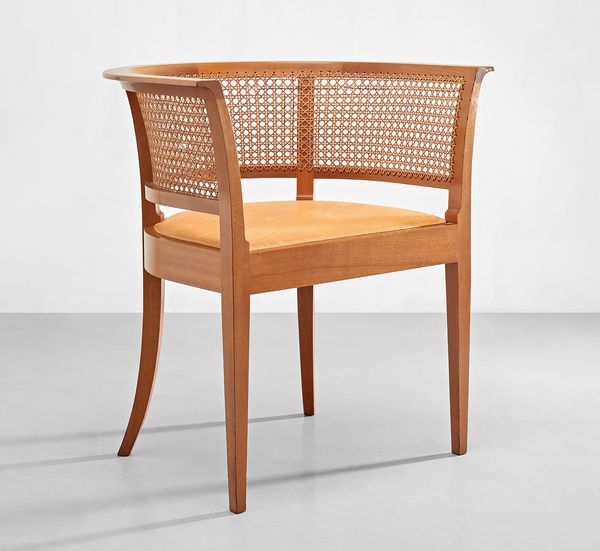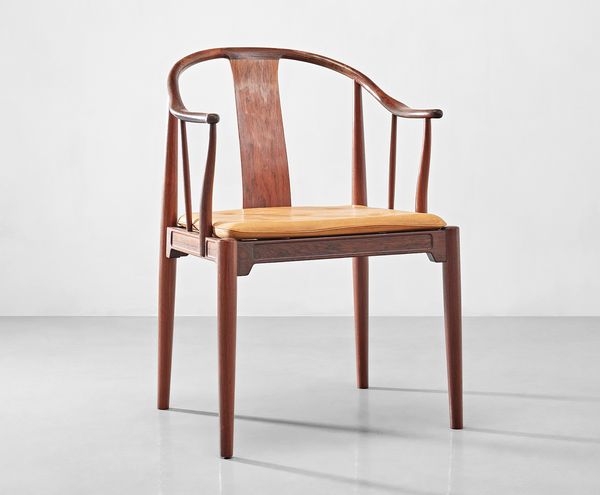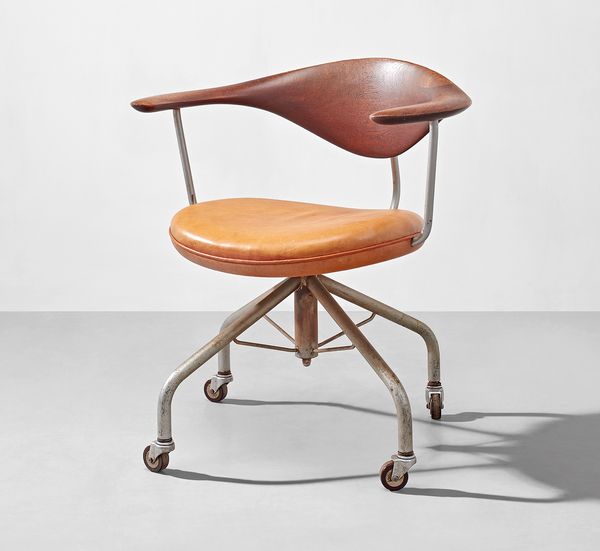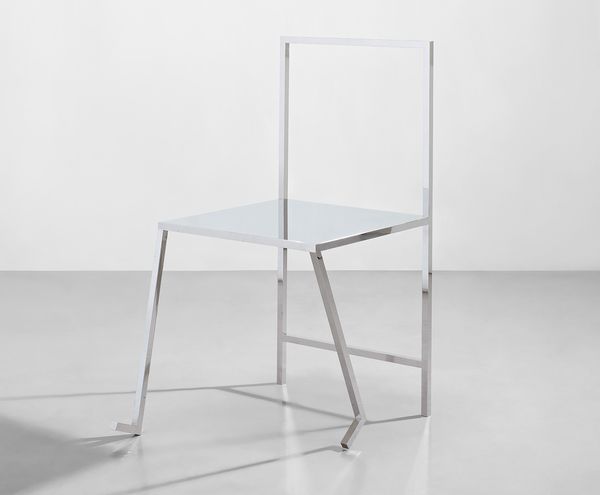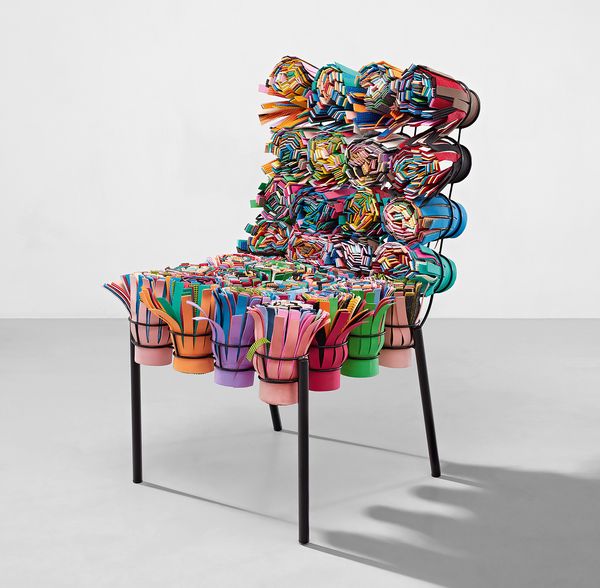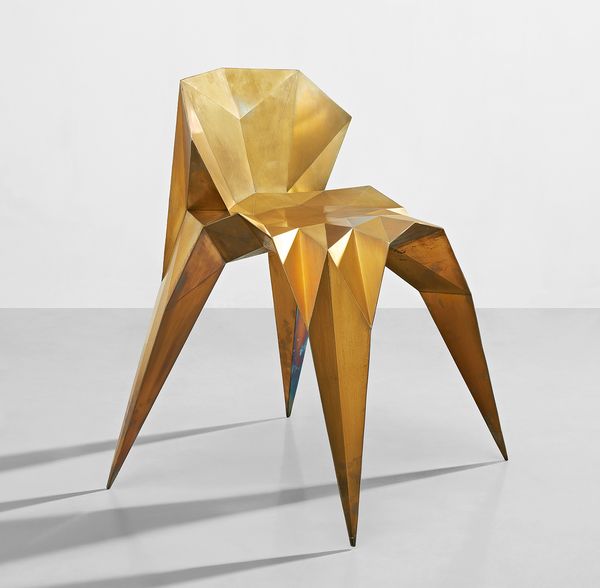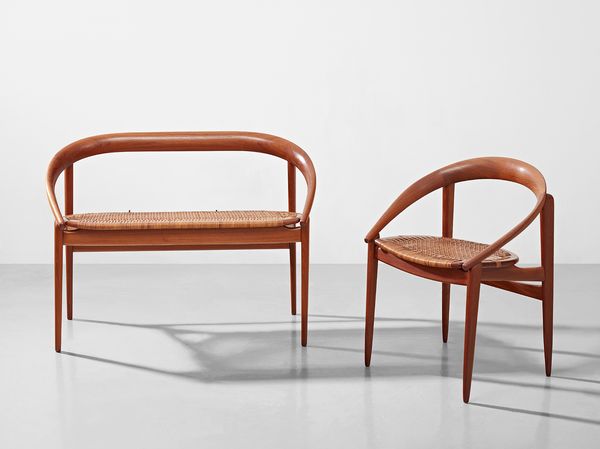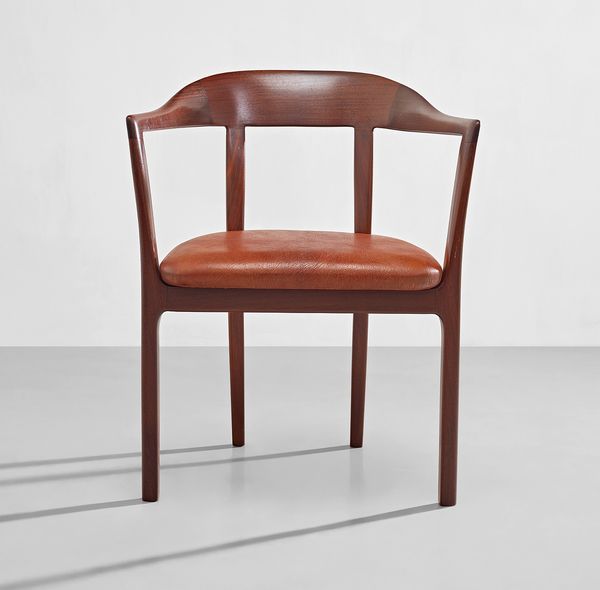SHAO FAN 'King' chair, designed 1955. Estimate: HK$100,000 - 150,000.
20th Century & Contemporary Art & Design, Hong Kong
A prescient collector, Kai-Yin Lo amassed a distinguished collection of antique Chinese furniture dating from the 17th to 20th centuries, before collecting both Scandinavian modern and contemporary design—a practice that foreshadowed now-commonplace academic and market trends. She acquired these pieces at auctions and from the most prestigious galleries in London, Paris, and New York as well as in Copenhagen, Helsinki, and Stockholm.
EJNER LARSEN AND AKSEL BENDER MADSEN Rare ‘Metropolitan’ armchair, model no. 2842/L, designed 1949, executed circa 1961. Estimate:HK$80,000 - 120,000.
20th Century & Contemporary Art & Design Day Sale, Hong Kong
Not only do the pieces in her collection have impressive provenance, but they also reflect her interest in the cross-cultural nature of design. As the first Professor of Cross Culture at Central Saint Martins, University of the Arts, London, this direction of inquiry has been at the core of her pursuit and practice. The chairs in her collection reveal compelling dichotomies between form and function, the hand and the machine, old and new, East and West, and illustrate the impact of Chinese furniture on modern and contemporary design. The collection of Kai-Yin Lo showcases how China became one of Modernism’s greatest sources of inspiration during the 20th century.
ALVAR AALTO Rare armchair, model no. 42, designed 1932, executed circa 1936. Estimate: HK$40,000 - 60,000.
20th Century & Contemporary Art & Design Day Sale, Hong Kong
Chairs made in Imperial China exhibit a number of characteristics that would later become pervasive in furniture design around the world. Aesthetically, antique Chinese furniture embodied harmony, balance, and symmetry, and it also served an important practical purpose. Within a home’s arrangement of rooms and gardens, furniture demarcated areas with discrete purposes. Chairs such as the round back chair added beauty to the home through its simple, restrained forms and its use of high-quality wood. Made with the finest materials, these chairs often took on relatively simple and sophisticated forms with elegant proportions. Craftsmen developed innovative techniques from traditional design principles in constructing these chairs and often implemented complex joinery to create strong and long-lasting pieces.
KAARE KLINT‘Faaborg’ armchair, designed for the Faaborg Museum, Denmark, designed 1914, executed after 1984. Estimate: HK$10,000 - 20,000.
20th Century & Contemporary Art & Design Day Sale, Hong Kong
HANS J. WEGNER 'China' chair, model no. FH4283, designed 1943, executed 1969. Estimate: HK$40,000 - 60,000.
20th Century & Contemporary Art & Design Day Sale, Hong Kong
This type of expert craftsmanship later became a hallmark of Nordic design. Scandinavian designers such as Kaare Klint and Hans Wegner looked to the construction of Chinese chairs as models for their own modern versions. Klint and Ole Wanscher, the forefathers of Danish Modern, designed early round back chairs that simultaneously broke with European design traditions and also harkened back to Chinese precedents. The same rigorous approach to excellent craftmanship, well-designed forms and innovation can be seen in the works of C.H. Brockmann-Petersen, Ejner Larsen and Aksel Bender Madsen, as well as Alvar Aalto, all designers whose work is represented in the collection of Kai-Yin Lo.
HANS J. WEGNER Early swivel armchair, model no. JH502, designed 1955. Estimate: HK$100,000 - 150,000.
20th Century & Contemporary Art & Design Day Sale, Hong Kong
The collection includes works by leading designers in each of their respective time periods. Designers such as Nendo and the Campana Brothers are at the forefront of contemporary design. Though much of contemporary design cannot easily be categorized aesthetically, we recognize that there are underpinnings that link contemporary design to the world of antique Chinese furniture.
NENDO ‘Manga Chair (24)’, 2015. Estimate:HK$35,000 - 55,000.
20th Century & Contemporary Art & Design Day Sale, Hong Kong
FERNANDO CAMPANA AND HUMBERTO CAMPANA, 'Sushi III' chair, 2012. Estimate: HK$70,000 - 90,000.
20th Century & Contemporary Art & Design Day Sale, Hong Kong
One frequent aspect of contemporary design is the role of technology in design and fabrication. Chinese designer Zhoujie Zhang, for example, uses computer software that instructs a chair to “grow” from a two-dimensional plane into a three-dimensional fractal object. Although the computer originates the design, Zhang constructs the actual chair by hand. Contemporary designers around the world like Zhang are exploring the role that technology may play in creating customizable furniture. Just like Chinese artisans in the 18th century developed complex joinery constructions and Danish furniture designers in the mid-1900s created novel construction methods, contemporary designers are propelling this conversation by utilizing the most innovative production techniques available.
ZHOUJIE ZHANG‘SQN1-F2B-Brass’ chair, from the ‘Triangulation Series’, designed 2014, executed in 2015. Estimate: HK$50,000 - 80,000.
20th Century & Contemporary Art & Design Day Sale, Hong Kong
In his “Chair” series, which began in 1995, contemporary Chinese painter and designer Shao Fan literally deconstructs antique Chinese furniture forms and incorporates visually contrasting materials into the design. In the “King” chair, he has taken a round-back chair, split it in half and between the two halves, inserted a black, rigid chair form. This series is meant to playfully explore the relationship between Chinese furniture from the Ming period with contemporary design, offering a visual expression of the cultural exchange that Kai-Yin Lo’s collection aptly represents.
C.H. BROCKMANN- PETERSEN Sofa and armchair, designed circa 1956. Estimate: HK30,000 - 50,000.
20th Century & Contemporary Art & Design Day Sale, Hong Kong
The connections between antique Chinese furniture, Scandinavian design, and contemporary design are both aesthetic and conceptual, and when put into context with one another, we learn more about the individual objects as well as their larger design context.
OLE WANSCHER Armchair, model no. J2833, designed 1958. Estimate:HK$20,000 - 30,000.
20th Century & Contemporary Art & Design Day Sale, Hong Kong
The ability to make connections between different cultures and different time periods has never been more important. This unique collection reveals the power in melding these processes and cross currents.
